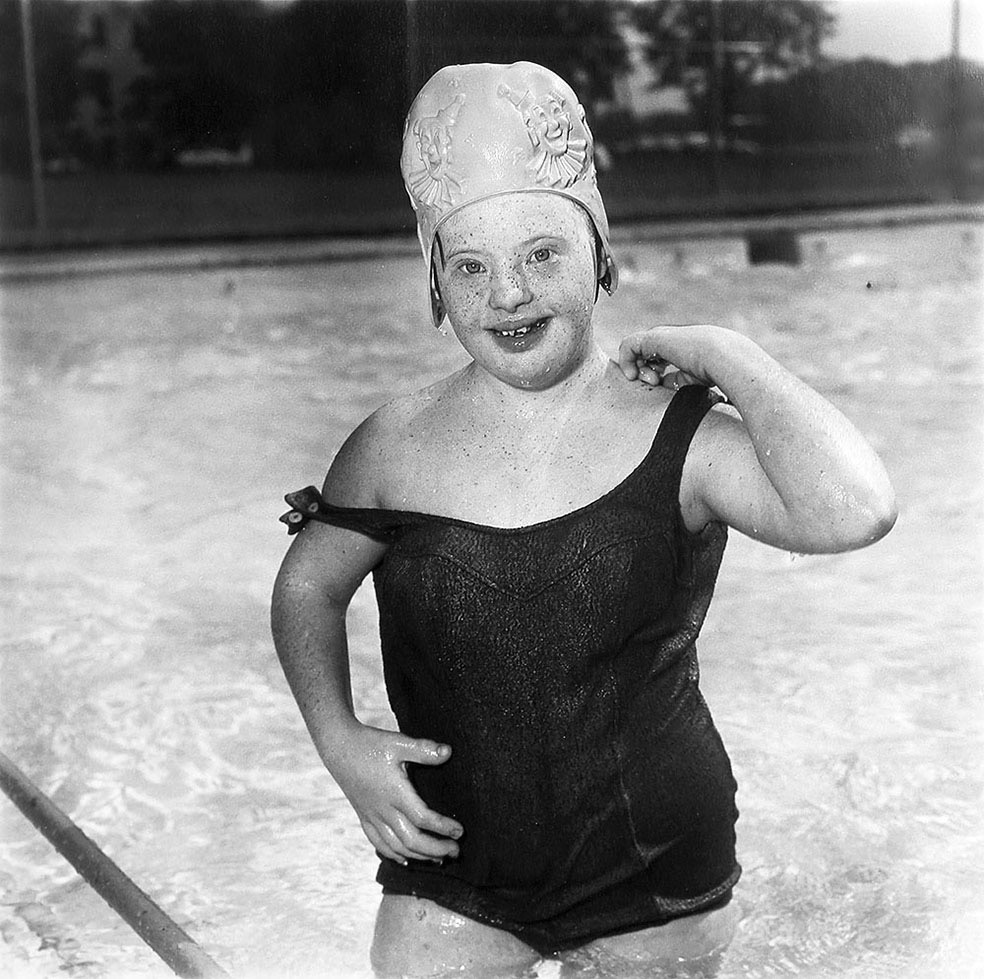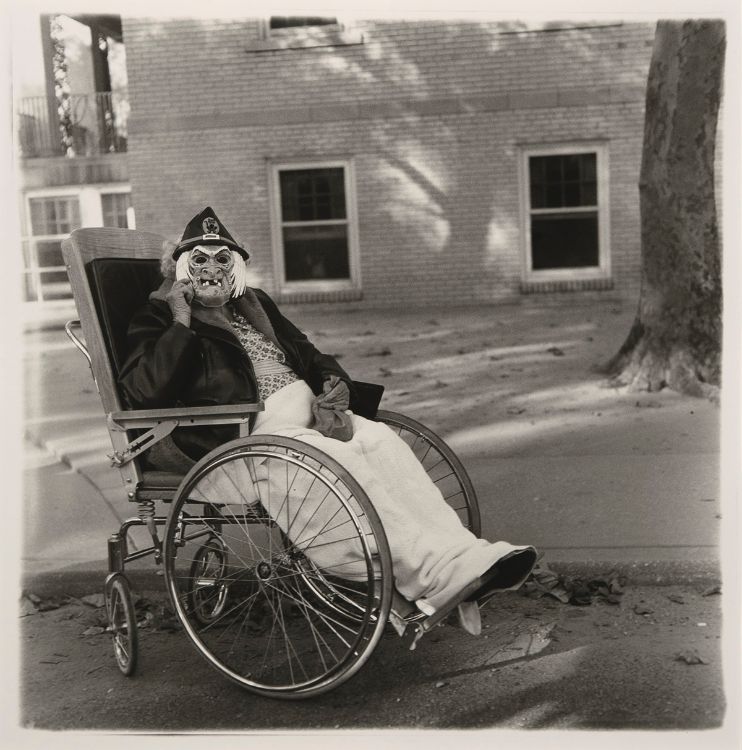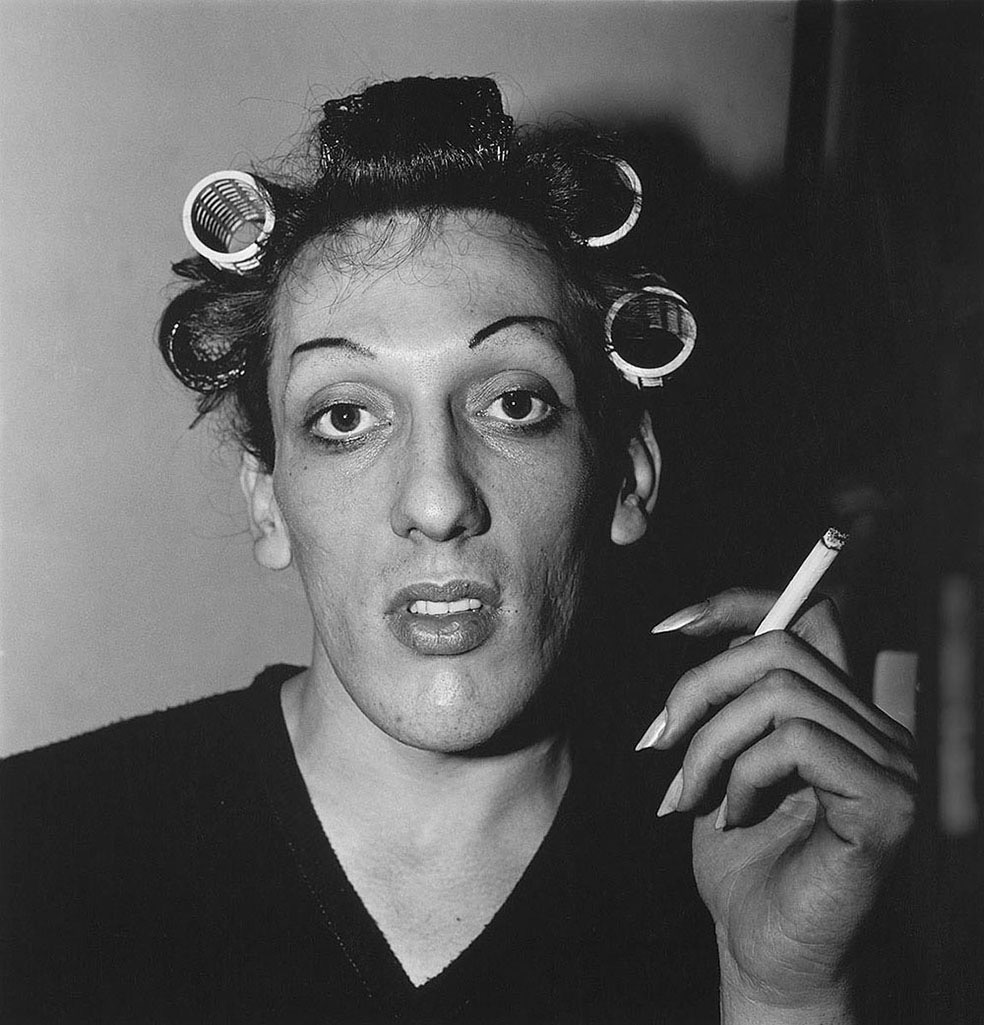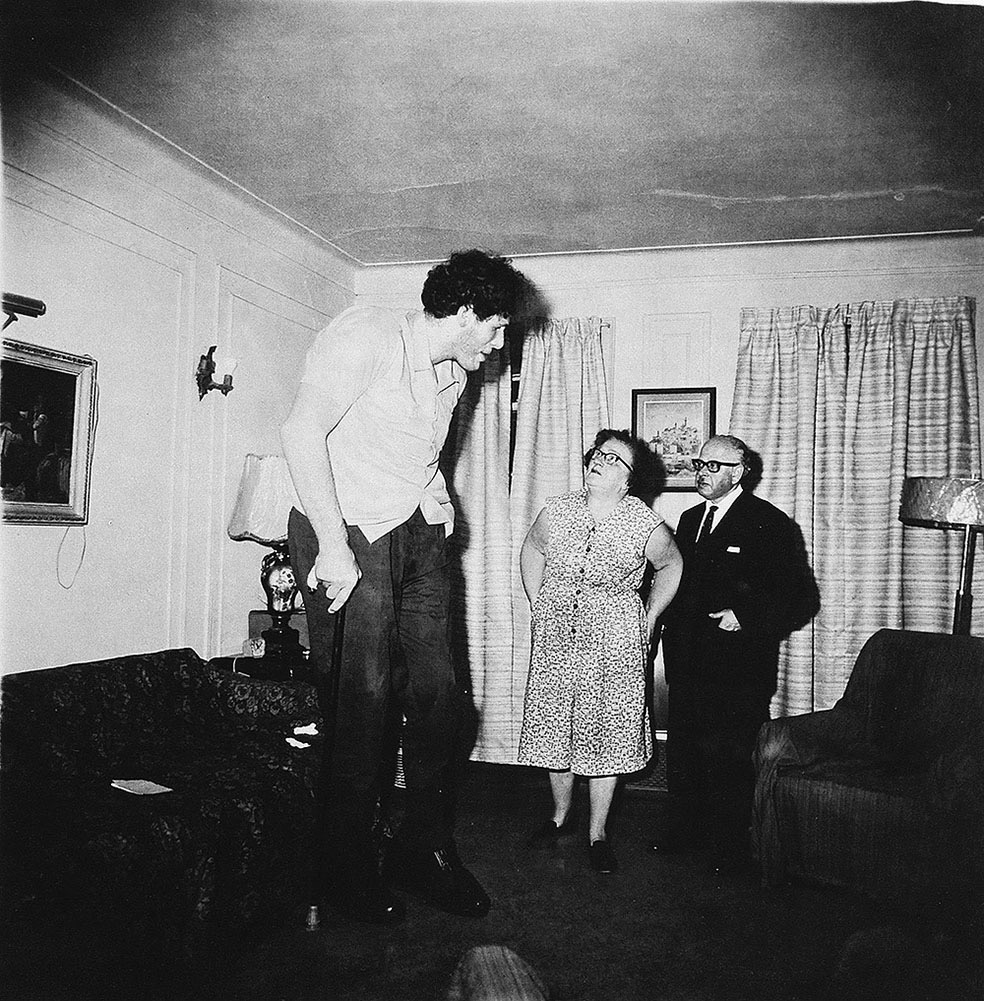The translator: Dr.Wattana K
Photographs can, not only take us to exotic places, but also help us see what we do not think exist in this world.
Diane Arbus was a distinctive photographer of the 50s and 60s. Her work presented extraordinary people full of feelings and emotions. While other photographers chose to display beautiful scenery, perfect people or things reflecting beauty; this female photographer took portraits of people who seemed to exist in a different world.
The subjects of her photographs were people who lived in hidden places of New York City, people who had never been documented on films: from criple people, dwarfs, circus clowns, ghost-like twins, to strippers, gays, trangenders. She felt that those outcasts had something attracting peoples’ attention to them.
Many admirers love Diane’s photographs, while at the same time many hate them. Some even dub her as ‘the photographer of the insane,’ others accuse her of violation of other peoples’ rights.
However, her work gained extreme fame, especially after her death.
The exhibition at the Museum of Modern Art gained the highest attendance of any exhibition in MoMA’s history. The photobook called Diane Arbus: An Aperture Monograph, printed since 1972 is still, currently, saleable. Her work is a source of inspiration for many documentary photographers.
Super Human…Ordinary People would like to introduce you to this legendary photographer and explore what she saw in those peculiarities.
From a wealthy family
Many analyze that Diane paid special attention to those groups of people because she spent her childhood life in a high society.
Diane was born in 1923 to a family running an animal fur business called Russek. The business was later developed into a Fifth Avenue department store selling female outfits. Her childhood life was, thus, easier than normal children.
She was brought up under extreme care. That, sometimes, made her feel being over-protective, being forbidden to do what she wanted to. When she grew up, she became ambitious, stubborn, disobedient and developed depressive disorder.
‘The disgusting princess in the movies,’ was what she explained about her childhood life.
“What hurt me was I had never encountered any difficulties because they never let me do anything myself.”
At the age of 14, Diane fell in love with Allan who worked in the advertisement department of her family business. They got married when she was 18 and started their profession as commercial and fashion photographers for reputable magazines like Vogue, Seventeen and Glamour. Diane was a stylist while Allan was a photographer.
Her turning point of life was the years 1952-1953 when the couple traveled to France, Italy and Spain to obtain more knowledge about photography. Allan would like to make his photographs more natural, while Diane found happiness in photographing things of her interest. Upon getting back from Europe, Diane lost interest in commercial photography, so she called it quit and Allan did not oppose it.
Diane, at the age of 33, had freedom to take photographs of everything she wanted. She applied to study photography with a famous photographer called Lisette Model focusing on photography as a work of art.
Lisette advised her about the meaning in photography. She taught Diane to turn the camera with a question and, sometimes, the photo answered back. Apart from that, Diane was told to take her camera out, without the film, in order that she could pay more attention to ‘the subject’ than ‘the technique.’
Diane studied many photographers’ works to get a glimpse of what those photographers thought when pressing the shutters. Lisette’s works impressed her the most, especially portraits of people in the lower class of society: beggars, drunkards. Those included VG’s work which she, apparently, adopted the style of works.
However, her photography common sense was, evidently, aroused through her discovery of another world, the world she had never known existed. That was when one of her friends took her to the movie Freaks by Tod Browning that portrayed stories of deformed people. The film made her obsess with peculiarity.
It was said that she got back to the movie times and times again, despite the family preaching her to keep away from those groups of people.
That can be said it was the origin of her unique style of photography.
Strange people

“When I am interested in someone’s life stories, it is hard to ask for a house visit and talk. But, with the camera in hand, they pay you more attention. Taking photos, for me, is the passport to wherever I want to go and do whatever I want to do”
, explained Diane on how taking photos had taken her to the new world.
At age 35 with 2 children and sustainable financial status, she was brave enough to abandon her safe and wealthy life for her inner quest.
She spent most of her time with the circus Flea in Hubert’s Dime Museum. The circus collected various deformed people: from a man with small arms like seals, an actor with half-man-half-woman face, a man resembling a monkey, a man who swallowed fire, Siamese twins to a tree-legged man.
- © Diane Arbus
- © Diane Arbus
She always went with friends, sometimes with other photographers. She tried to build good relationships with her subjects: bringing them gifts and photographs in order for them to be willing to have their photographs taken.
In 1959, she got divorced and pursued serious photography. Her first sets of works were printed in renown magazines like Esquire, Harper’s Bazaar, and The Sunday Times Magazine.
Her photographs gradually gained public interest because they changed the traditional way of photography. She chose to display portraits of people whom the general public avoided or peeped. That display attracted audiences.
Apart from the subjects’ own uniqueness, she could persuade them to stare straight into the camera. The photos made direct eye contact with the audience without fear or awkwardness. That made each and every of her photos extremely powerful.
Those kinds of photos were not easy to take, she had to gain trust from her subjects. On some occasions, she was afraid, but she had to manage her feelings to get her photos taken. Her works, thus, were not superficial, instead they were results of extreme effort, patience and endurance.
At the same time, Diane praised these peculiar people for their conquering of fear for their own survival. For her, this was the true beauty.
“I take many photos of strange people. They are the first photographs I want to take and it makes me thrilled. I have just admired them. Even now, I still admire some of them. That does not mean they are my best friends, but they make me feel the mixture of shame and fear. They are like characters in fairy tales. They make you stop to look and ask you to solve the puzzles. Most of them have to cross over fear and hurtful experiences since birth. They all pass every life test, these are high class people.”
“I am deeply believe that if I don’t take their photos, no one will see them,”
Not everybody, nonetheless, appreciated this kind of photos. Her photo was sold at only $75. Many times, they were rejected by the magazine. Esquire, once, assigned her to take photos of New York City for the magazine special issue. She worked tirelessly days and nights, traveled to various morques and slaughter houses. Eventually, the magazine selected only 6 photos. Despite those circumstances, she kept on working though sometimes, she had to ask her ex-husband for money.
In 1960, Diane changed her style to take photos of ordinary people. She kept her signature by making ordinary people extraordinary. Her reason was that the style provoked human curiosity.
Diane’s technique was that she looked for the subjects’ flaws and then pulled them out. Many times, she took photos from so close that her subjects felt awkward and expressed strange behaviors.
One of the most famous photos: Child with a Toy Grenade in Central Park, 1962, was taken 11 shots. Most of them, the boy just posted with a smile just like an ordinary boy. Anyway, she chose the most bizarre picture, the boy with the twisted face as if he was frustrated.

That boy was Colin Wood. He said in the interview that the day he met Diane was the day he was upsetting because his parents were about to get divorced. Diane’s instinct may have sensed this, she took his photo amidst his frustration that he wanted to unlock the bomb and threw it out.
“You see someone on the street and notice some flaws. It is so normal for us to recognize these peculiarities,” explained Diane on how she thought when creating her art piece.
Diane gained so much acceptance. In 1967, her photos were displayed in an exhibition called The New Document. This exhibition was considered a golden step of the Street Style photography held at The Museum of Modern Art (MoMA).
Many people were willing to have Diane take their photos, but many were not satisfied with the outcome. A Very Young Baby, NYC, 1968 was one example of dissatisfaction. Gloria Vanderbilt, a famous American artist, claimed that Diane made her son’s photo look creepy, so she did not permit for that photo to be printed.
The same happened with the photo called Identical Twins, Roselle, NJ, 1967, which is Diane’s most famous photo. The twins’ parents tried to stop the display of this photo claiming that their children looked like evil ghosts. There is a rumour that Stanley Kubrick, a well known film director, likes this photo so much that he used it in the horror movie The Shining.

© Diane Arbus
Another story portraying Diane’s working style was when the magazine New York hired her to take photos of a famous underground model called Viva. Diane spent all evening taking Viva’s photos in her apartment. She came back the next morning and asked to take Viva’s head shot. She got a photo of Viva with eyes rolling back as if she was high and without a blouse. It was a buzz when the photo was out. The magazine lost the commercials, Viva’s work was cancelled and she was aggressively criticized.
Unsurprisingly, many critics criticized her for violating other peoples’ rights and quite a few audience despites her photos. One of MoMA’s curators said that audiences expressed their disgust by spitting on many photos on display. Those pictures had to be removed from the exhibition. One of those was A Young Man in Curlers at Home on West 20th Street, NYC, 1966. In 2004, this photograph was auctioned for $200,000.
The legendary female photographer

At the final stage of her life, she was bombarded with fatal illness and depressive disorder.
Her documentary photos of mental retarded subjects showed softer light and shadow.
Firstly, she said that this set of work was like poetry: soft and beautiful. Later, she said she hated this piece. That showed the symptoms of depression and extreme bipolar disorder.
Near her death period, she wrote, “My emotion goes up and down all the time.” On top of that emotional state, she got hepatitis. That illness made her stress and depression worse.
On July 26, 1971, at the age of 48, Diane took many anti-depression pills and cut her wrist in the apartment bathtub. The curtain went down for the life of one of the most colorful and thrilling female photographers of the 20th century.
A year after her pass, her photos made a headline again. They were selected to display in the exhibition called The Venice Biennale, Italy. She is the first American photographer who receives this honor. Millions of people attended her work between the years 1972 and 1979.
Many praise Diane for her bravery to go where no one dares. Taking photos of people on the borderline of society helps the public be aware of those people’s existence and leads to discussion on various issues. Her work influences the concept and ideas of photography from that era until now.
Michael Kimmelman, an American art critic wrote about the exhibition Diane Arbus Revelations, “Diane didn’t work because someone hired her to, but she used her brave heart to change her work into an art piece.”
In 2006, her life story was made into the movie Fur: An Imaginary Portrait of Diane Arbus, starring Nicole Kidman as Diane Arbus. It was criticized that the film director put so much imaginary into the film that it twisted the facts. The movie made the wide world talk about this female photographer again.








